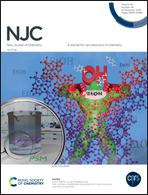Ion-modulated photoluminescence of MoS2 nanoflakes for cell viability detection
Abstract
Cell viability detection plays a crucial role in apoptosis and anticancer drug research. Compared with conventional colorimetric assays and organic fluorescent probe-based imaging, it is greatly desired to develop a simple and facile fluorescent probe for in situ real-time detection of cell viability. Herein, MoS2 nanoflakes are employed as fluorescent probes for detecting cancer cell viability by using their inherent tunable photoluminescence (PL) properties by ion intercalation. The appropriate amount of MoS2 nanoflakes for A549 lung cancer cells was firstly determined by MTT assay. After MoS2 nanoflakes successfully covered cells, the effects of the nanoflakes on cell morphology and mechanical properties were studied by atomic force microscopy (AFM). Then, the modulation of PL by potassium ions (K+) from cells was investigated at different cell viabilities. The results showed that PL intensity increased as cell viability decreased. Finally, the nanoflakes were further used as fluorescent probes to assess the cell viability change induced by anticancer drugs. The results showed that with the increase of drug concentration, the fluorescence intensity increased, indicating a decrease in cell viability. The ion-modulated PL of MoS2 nanoflakes makes MoS2 a promising candidate for applications in anticancer drug screening.



 Please wait while we load your content...
Please wait while we load your content...